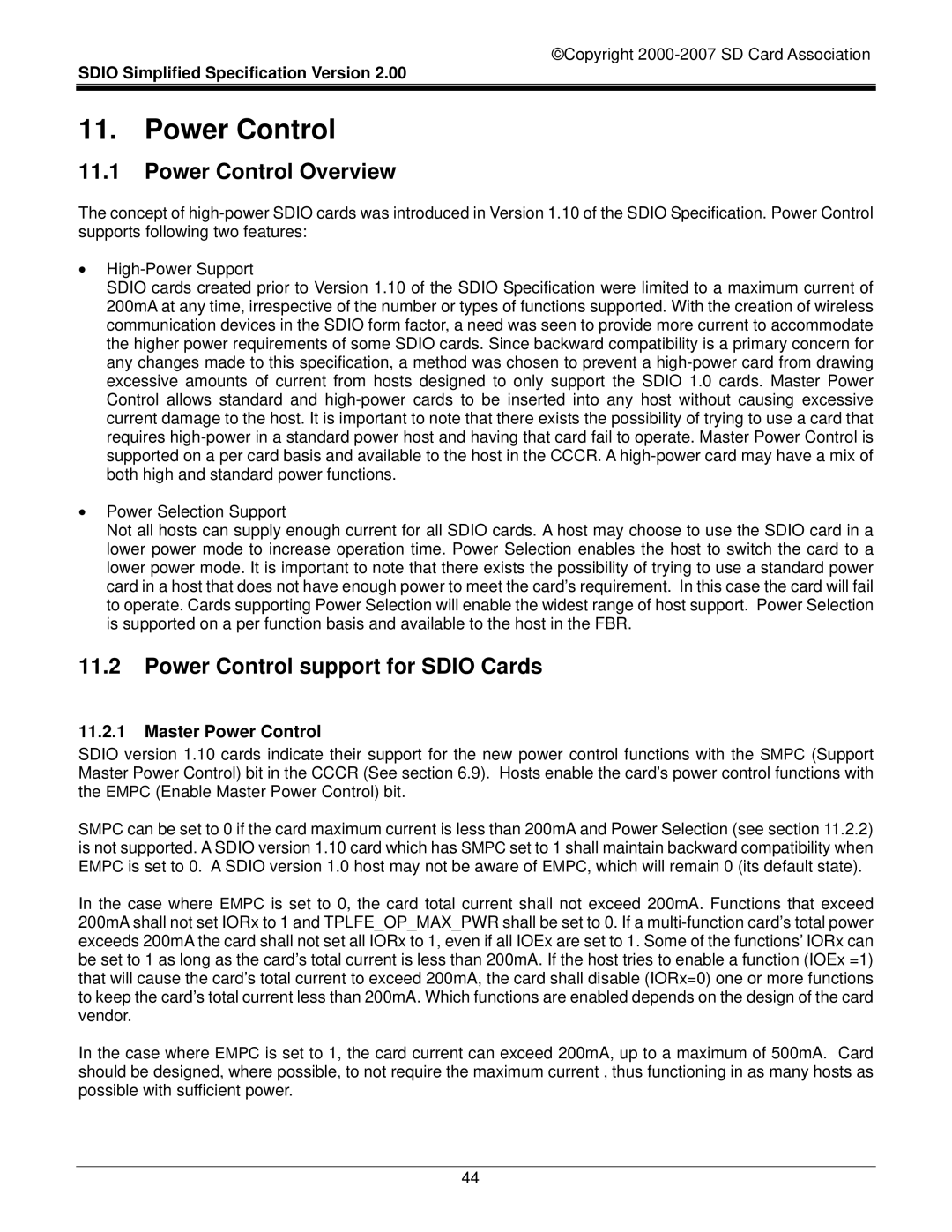
©Copyright
SDIO Simplified Specification Version 2.00
11. Power Control
11.1Power Control Overview
The concept of
•
SDIO cards created prior to Version 1.10 of the SDIO Specification were limited to a maximum current of 200mA at any time, irrespective of the number or types of functions supported. With the creation of wireless communication devices in the SDIO form factor, a need was seen to provide more current to accommodate the higher power requirements of some SDIO cards. Since backward compatibility is a primary concern for any changes made to this specification, a method was chosen to prevent a
•Power Selection Support
Not all hosts can supply enough current for all SDIO cards. A host may choose to use the SDIO card in a lower power mode to increase operation time. Power Selection enables the host to switch the card to a lower power mode. It is important to note that there exists the possibility of trying to use a standard power card in a host that does not have enough power to meet the card’s requirement. In this case the card will fail to operate. Cards supporting Power Selection will enable the widest range of host support. Power Selection is supported on a per function basis and available to the host in the FBR.
11.2Power Control support for SDIO Cards
11.2.1Master Power Control
SDIO version 1.10 cards indicate their support for the new power control functions with the SMPC (Support Master Power Control) bit in the CCCR (See section 6.9). Hosts enable the card’s power control functions with the EMPC (Enable Master Power Control) bit.
SMPC can be set to 0 if the card maximum current is less than 200mA and Power Selection (see section 11.2.2) is not supported. A SDIO version 1.10 card which has SMPC set to 1 shall maintain backward compatibility when EMPC is set to 0. A SDIO version 1.0 host may not be aware of EMPC, which will remain 0 (its default state).
In the case where EMPC is set to 0, the card total current shall not exceed 200mA. Functions that exceed 200mA shall not set IORx to 1 and TPLFE_OP_MAX_PWR shall be set to 0. If a
In the case where EMPC is set to 1, the card current can exceed 200mA, up to a maximum of 500mA. Card should be designed, where possible, to not require the maximum current , thus functioning in as many hosts as possible with sufficient power.
44
